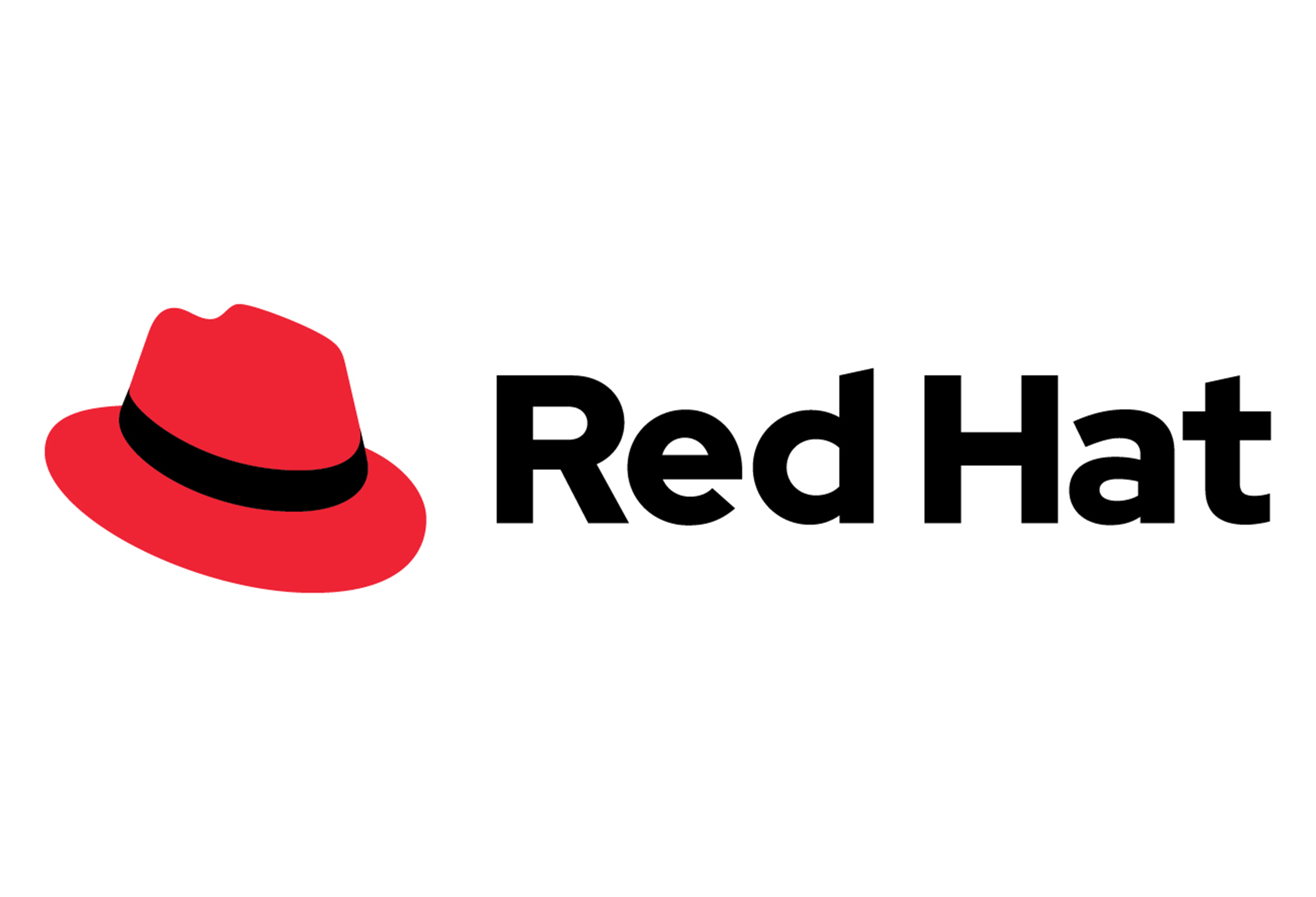
Article by Paul Cormier
Executive Vice President and President of Products and Technologies, Red Hat, Inc.
The past year has seen the rise of applications that push enterprise IT to the (literal) edge, from using autonomous vehicles guided by artificial intelligence (AI) to vast sensor networks that rely on 5G for instant connectivity and emergency reaction times. Whether it’s the Internet-of-Things (IoT), fog computing or edge computing, the intent is to bring computing resources like processing power and storage closer to the end user or data source to improve the ability to scale, responsiveness and the overall service experience.
We can look at the edge as the newest IT footprint, becoming an extension of the data center just like bare-metal, virtual environments, private cloud and public cloud. In a sense, edge computing is a summation of the other four footprints, blending pieces from each to create infrastructure aimed at tackling specific customer demands that traditional IT models cannot address. But unlike the other footprints, edge computing has two key delineating factors:
- It simply does not exist without the hybrid cloud.
- The foundation of edge computing must be open or it WILL fail.
Bold statements? Sure, but from my point of view, they are wholly accurate. If edge computing is going to be a realistic future for enterprise IT, it needs the hybrid cloud AND open source to thrive.
Why edge computing is “hybrid or die”
Edge computing turns the concept of cloud computing on its head. Where “traditional” cloud deployments are about centralizing on a single infrastructure that can scale up as business needs dictate, edge is focused on “scaling out” geographically.
This could be small-form servers on cell towers, sensors monitoring a global energy network or next-generation factory automation systems that anticipate maintenance needs. Whatever the specific workload for edge, the need is the same: Faster responses for more timely services, whatever they may be. eBay, for example, is adopting edge computing by decentralizing its datacenters with the intent to create a faster, more consistent user experience by moving data and online services closer to users.
With the disparate nature of edge computing, consistency is key – an edge deployment could theoretically be hundreds of thousands of tiny sensors connected to a data aggregation tier which help to provide real-time feedback to what the sensors are actually monitoring. It’s fundamentally impossible to manage each of these deployments if they don’t share a more secure control plane via automation, management and orchestration.
This consistency is offered through the hybrid cloud – from edge devices to the network to the centralized datacenter, a hybrid cloud deployment provides sanity to what would otherwise be sheer madness across a technology ecosystem. It gives all of these varied components a common foundation upon which to rest, whether it’s Linux, Kubernetes or Ansible, enabling IT teams to manage ten thousand networked devices just as they would their centralized IT.
Open not closed: True in the datacenter, true at the edge
Innovation can be easily crippled by fragmentation and, worse, the introduction of “proprietary” or open core models. You can look back 25 years to UNIX to see how painful this challenge was, where every hardware vendor had their own bespoke operating system that wouldn’t work except on their own boxes. The introduction of enterprise-grade Linux broke this chain, and kickstarted the innovation cycle, leading to virtualization, cloud computing, containers, Kuberentes and, now the edge.
If this innovation is chained via “edge edition” technologies rather than being driven by common, industry-wide open standards, fragmentation rears its head again. This is where Red Hat, along with our industry partners, are driving the edge – through the creation of these standards in upstream communities and industry working groups, like the LF Edge, Kubernetes Edge & IoT Working Group, the OpenStack Edge Working Group, Akraino Edge Stack, OPNFV and more.
This isn’t to say that every edge solution is going to be based on open source technologies, despite what glossy marketing materials from the vendor world might say. A commitment to open source doesn’t only apply when convenient or when something new and shiny, like edge computing, comes along. At the same time, layering proprietary features or capabilities onto an “open core” is antithetical to the standards of open source – half open is fully closed, whether you’re talking about an operating system or the edge.
Red Hat’s vision for the edge: Innovative, hybrid and open
Red Hat helped drive the early standards around enterprise Linux, which has established the platform as the datacenter workhorse for innovation and production workloads. We’ve helped fuel the adoption of KVM as the open virtualization platform of choice for business computing, and we’ve been instrumental in the build-out of Kubernetes into the juggernaut of container orchestration that it is.
Now, as we and the collective business world turn our eyes to the network’s edge, we see another wave of raw innovation. The promise and power of edge computing is very real and Red Hat, along with the open source communities and our ecosystem of partners, intends to help the business world capitalize on these benefits without fear of fragmentation or lock in.
The edge is open. The edge is hybrid. And the edge is powered by Red Hat.

บทความโดย พอล คอร์เมียร์
รองประธานบริหารและประธานฝ่ายผลิตภัณฑ์และเทคโนโลยี เร้ดแฮท
ในปีที่ผ่านมาเราได้เห็นการเพิ่มขึ้นของแอปพลิเคชั่นจำนวนมากที่ขับเคลื่อนให้ระบบไอทีขององค์กรเข้าสู่ขอบเขตที่แท้จริง จากการใช้ยานพาหนะอัตโนมัติตามคำแนะนำของปัญญาประดิษฐ์ (AI) ไปจนถึงเครือข่ายเซ็นเซอร์ขนาดใหญ่ที่พึ่งพาเทคโนโลยี 5G เพื่อการเชื่อมต่อได้ในทันที และการตอบสนองต่อสถานการณ์ฉุกเฉิน ไม่ว่าจะเป็น Internet-of-Things (IoT), Fog computing หรือ Edge computing จุดมุ่งหมายคือการนำทรัพยากรคอมพิวเตอร์ เช่น พลังการประมวลผลและพื้นที่จัดเก็บไว้ใกล้กับผู้ใช้หรือแหล่งข้อมูล เพื่อเพิ่มความสามารถในการปรับขนาดการตอบสนอง และปรับปรุงประสบการณ์การให้บริการโดยรวม
เราสามารถมองว่า edge เป็นเหมือนเทคโนโลยีใหม่ล่าสุด ซึ่งเป็นส่วนขยายของดาต้าเซ็นเตอร์เหมือนกับ bare-metal, สภาพแวดล้อมที่เป็นเวอร์ชวล, ไพรเวทคลาวด์และพับลิคคลาวด์ ในทางทฤษฎี edge computing คือการรวมตัวกันของเทคโนโลยีใหม่อีกสี่รายการ ผสมผสานกันเพื่อสร้างโครงสร้างพื้นฐานไอทีที่มีจุดมุ่งหมายในการแก้ปัญหาความต้องการที่เฉพาะเจาะจงของลูกค้าแต่ละราย ซึ่งโมเดลไอทีแบบเดิมไม่สามารถทำได้ อย่างไรก็ตาม edge computing ก็เหมือนกับเทคโนโลยีอื่น ๆ ที่มีปัจจัยสำคัญอยู่สองประการคือ
- Edge computing จะเกิดขึ้นไม่ได้หากปราศจากไฮบริดคลาวด์
- รากฐานของ Edge computing ต้องเป็นระบบเปิดไม่เช่นนั้นจะล้มเหลว
เป็นอย่างนั้นทีเดียวหรือ จากมุมมองของผมมันเป็นเช่นนั้นจริง ๆ หาก Edge computing กำลังจะเป็นอนาคตที่แท้จริงสำหรับระบบไอทีขององค์กร มันก็จำเป็นอย่างยิ่งที่ต้องใช้ไฮบริดคลาวด์และโอเพ่นซอร์สเพื่อให้บรรลุเป้าหมายนี้
ทำไม Edge computing จึง “อยู่ไม่ได้หากไม่ใช้ไฮบริดคลาวด์”
Edge computing เปลี่ยนคอนเซปต์ของคลาวด์คอมพิวติ้งแบบตรงข้ามกับที่เคยเป็นมา ในขณะที่การใช้คลาวด์แบบ “เดิม” เป็นเรื่องของการรวมศูนย์อยู่บนโครงสร้างพื้นฐานเดี่ยวที่สามารถ scale up ได้ตามความต้องการของธุรกิจ แต่ edge กลับมุ่งเน้นไปที่การ “scaling out”
ซึ่งอาจเป็นเซิร์ฟเว่อร์ขนาดเล็กบนเสารับส่งสัญญาณ เซ็นเซอร์ที่มอนิเตอร์เครือข่ายพลังงานทั่วโลก หรือระบบอัตโนมัติสมัยใหม่ในโรงงานที่ต้องการคาดการณ์การบำรุงรักษา แม้จะเป็นเวิร์กโหลดที่เฉพาะเจาะจงสำหรับ edge ความต้องการก็เหมือนกัน คือ การตอบสนองที่เร็วขึ้นสำหรับบริการที่ตรงเวลามากขึ้น ไม่ว่าจะเป็นเรื่องใดก็ตาม ตัวอย่างเช่น eBay ใช้ edge computing ด้วยการกระจายศูนย์ดาต้าเซ็นเตอร์ต่าง ๆ ของตน โดยมีจุดประสงค์เพื่อสร้างประสบการณ์ด้านความรวดเร็วและสม่ำเสมอให้กับผู้ใช้ได้มากขึ้น โดยเคลื่อนย้ายข้อมูลและบริการออนไลน์ต่าง ๆ ให้อยู่ใกล้ผู้ใช้มากขึ้น
ด้วยลักษณะที่แตกต่างของ edge computing ความคงเส้นคงวาและความสอดคล้องในการทำงานร่วมกันเป็นสิ่งสำคัญ โดยหลักการแล้วการใช้ edge อาจประกอบด้วยเซ็นเซอร์ขนาดเล็กหลายแสนตัว เชื่อมต่อไปยังกลุ่มข้อมูลหนึ่ง ซึ่งช่วยให้คำตอบกลับแบบเรียลไทม์กับอะไรก็ตามที่เซ็นเซอร์เหล่านั้นกำลังทำการตรวจสอบอยู่ โดยพื้นฐานแล้วเป็นไปไม่ได้ที่จะจัดการกับแต่ละการใช้งานเหล่านี้ หากไม่ได้แชร์ระบบการควบคุมที่ปลอดภัยมากขึ้นผ่านระบบอัตโนมัติ ผ่านการบริหารจัดการ และผ่านการจัดการและควบคุมการทำงานด้านต่าง ๆ เข้าด้วยกัน
ไฮบริดคลาวด์มีความคงเส้นคงวา และสามารถสร้างความสอดคล้องกันตามที่ edge computing ต้องการการใช้ไฮบริดคลาวด์คือการมอบความมั่นคงและความสอดคล้องกันให้กับระบบนิเวศทางเทคโนโลยี นับตั้งแต่อุปกรณ์ระบบ edge ไปยังระบบเน็ตเวิร์ค ไปจนถึงดาต้าเซ็นเตอร์ที่เป็นศูนย์กลาง โดยไม่เกิดความวุ่นวายติดขัด ไฮบริดคลาวด์ช่วยให้องค์ประกอบมากมายเหล่านี้กลายเป็นโครงสร้างร่วมกันเพียงโครงสร้างเดียวเพื่อรองรับการใช้งานกับโซลูชั่นต่าง ๆ ไม่ว่าจะเป็น ลีนิกซ์ (Linux) คูเบอร์เนเตส (Kubernetes) หรือ แอนซิเบล (Ansible) ในการช่วยให้ทีมงานด้านไอทีสามารถจัดการกับอุปกรณ์เน็ตเวิร์กเป็นหมื่น ๆ รายการได้เหมือนที่พวกเขาจัดการศูนย์ไอทีของตน
ต้องเป็นระบบเปิด: ทั้งในดาต้าเซ็นเตอร์และ Edge
นวัตกรรมอาจไม่สมบูรณ์ได้จากการขาดการร่วมมือกันในการพัฒนาเทคโนโลยี และที่แย่กว่านั้นคือการนำโมเดล “proprietary” หรือ โมเดล “open core” เข้ามาใช้ ถ้าเรามองย้อนไปที่ UNIX เมื่อ 25 ปีที่ผ่านมา ซึ่งเราได้เห็นแล้วว่ามันมีข้อจำกัดอย่างไร เมื่อผู้ขายฮาร์ดแวร์ทุกรายมีระบบปฏิบัติการที่แม้จะจัดทำแบบเจาะจงให้กับลูกค้าแต่ละราย แต่จะไม่สามารถทำงานบนอุปกรณ์อื่นได้นอกจากบนอุปกรณ์ของผู้ขายเท่านั้น ลีนิกซ์สำหรับองค์กรเข้ามาช่วยปลดข้อจำกัดนี้ และเป็นการเริ่มต้นวงจรแห่งนวัตกรรมที่นำสู่เวอร์ชวลไลเซชั่น คลาวด์คอมพิวติ้ง คอนเทนเนอร์ คูเบอร์เนเตส และล่าสุดคือ edge computing
หากนวัตกรรมนี้ถูกล็อกไว้ด้วยเทคโนโลยีที่เป็น “edge edition” แทนที่จะถูกขับเคลื่อนด้วยมาตรฐานแบบเปิดที่ใช้ในหลาย ๆ อุตสาหกรรมทั่วไป การขาดความร่วมมือกันในการพัฒนาเทคโนโลยีนี้ก่อให้เกิดจุดวิกฤตอีกครั้ง นี่คือเหตุผลที่เร้ดแฮทและพันธมิตรในอุตสาหกรรมกำลังขับเคลื่อน edge ผ่านการสร้างมาตรฐานเหล่านี้ผ่าน upstream communities และกลุ่มการทำงานในอุตสาหกรรมต่าง ๆ เช่น LF Edge, Kubernetes Edge & IoT Working Group, the OpenStack Edge Working Group, Akraino Edge Stack, OPNFV และอื่น ๆ อีกมาก
อย่างไรก็ตามไม่ได้หมายความว่าโซลูชั่น edge ทุกอย่างจะต้องทำงานอยู่บนเทคโนโลยีโอเพ่นซอร์ส แม้ว่าสื่อด้านการตลาดในมุมมองของผู้ขายจะกล่าวเช่นนั้นก็ตาม ความมุ่งมั่นต่อโอเพ่นซอร์ส ไม่ได้มีไว้ใช้เพียงเมื่อสะดวกหรือเมื่อมีสิ่งใหม่หรือสิ่งที่น่าสนใจเกิดขึ้น เช่น edge computing เท่านั้น ในขณะเดียวกัน การจัดวางฟีเจอร์หรือความสามารถที่มีกรรมสิทธิ์ไว้บน “open core” นั้นแตกต่างอย่างมากกับมาตรฐานของโอเพ่นซอร์ส ไม่ว่าจะเป็นเรื่องของระบบปฏิบัติการหรือ edge
วิสัยทัศน์ของเร้ดแฮทเกี่ยวกับ Edge: นวัตกรรมด้านไฮบริดและระบบเปิด
เร้ดแฮทได้ช่วยผลักดันมาตรฐานเริ่มต้นให้กับลีนิกซ์สำหรับองค์กร ซึ่งเป็นการสร้างแพลตฟอร์มเพื่อใช้เป็นศูนย์ข้อมูลสำหรับนวัตกรรมและเวิร์กโหลดด้านการผลิตต่าง ๆ เราได้ช่วยเป็นพลังขับเคลื่อนการใช้ KVM เป็นแพลตฟอร์มเวอร์ชวลไลเซชั่นระบบเปิดเป็นทางเลือกให้กับการประมวลผลทางธุรกิจ และเราเป็นส่วนสำคัญในการสร้างคูเบอร์เนเตส ให้เป็น container orchestration ที่ได้รับการยอมรับกันอย่างกว้างขวาง
ปัจจุบัน การที่โลกธุรกิจโดยรวมเปลี่ยนให้เราหันไปสนใจ network’s edge เราจึงเห็นอีกหนึ่งคลื่นลูกใหม่แห่งนวัตกรรมที่ยังไม่ได้ผ่านการเสริมแต่ง ลักษณะและพลังของ edge computing เป็นความจริงที่ปฏิเสธไม่ได้ และเร้ดแฮทร่วมกับคอมมูนิตี้ด้านโอเพ่นซอร์สรวมถึงพาร์ทเนอร์ของเรา มุ่งมั่นที่จะช่วยโลกธุรกิจให้ได้รับประโยชน์เหล่านี้โดยไม่ต้องกังวลถึงการผูกขาดหรือการล็อกอิน
Edge = ระบบเปิด Edge คือไฮบริด และ Edge ขับเคลื่อนด้วยเร้ดแฮท

